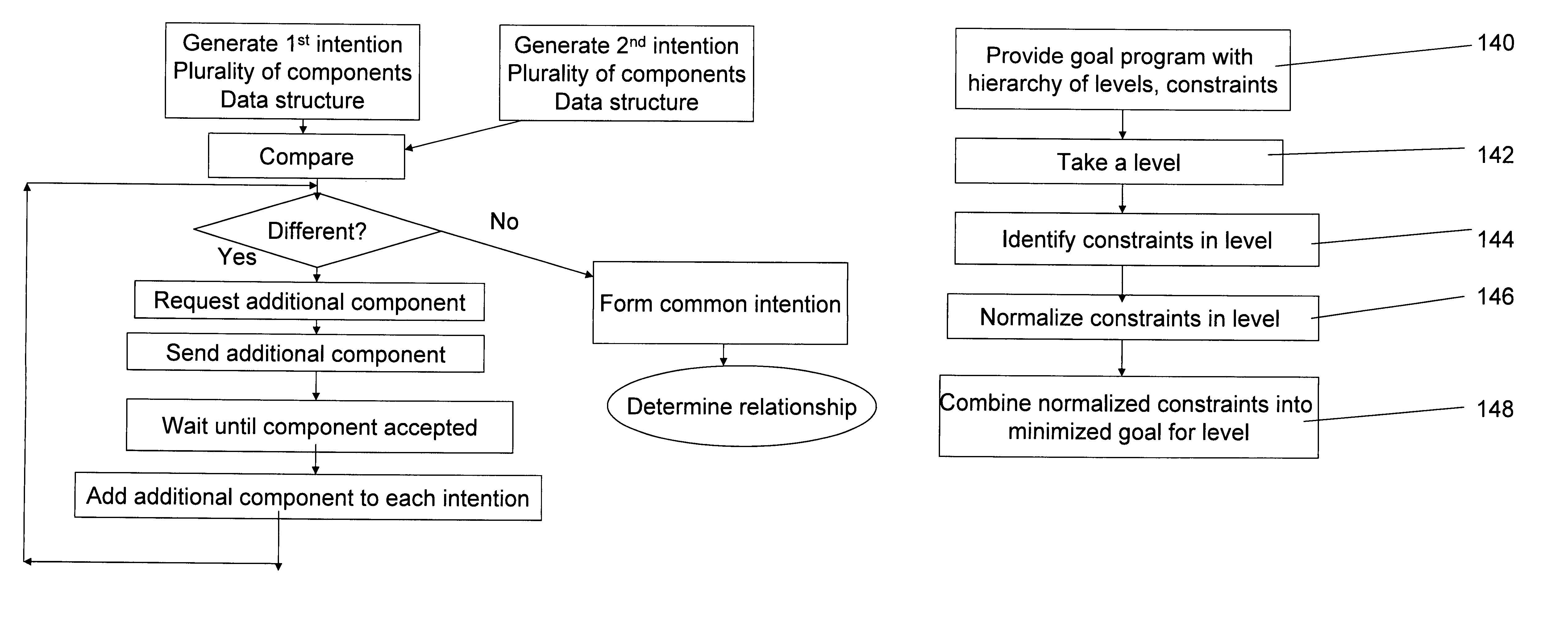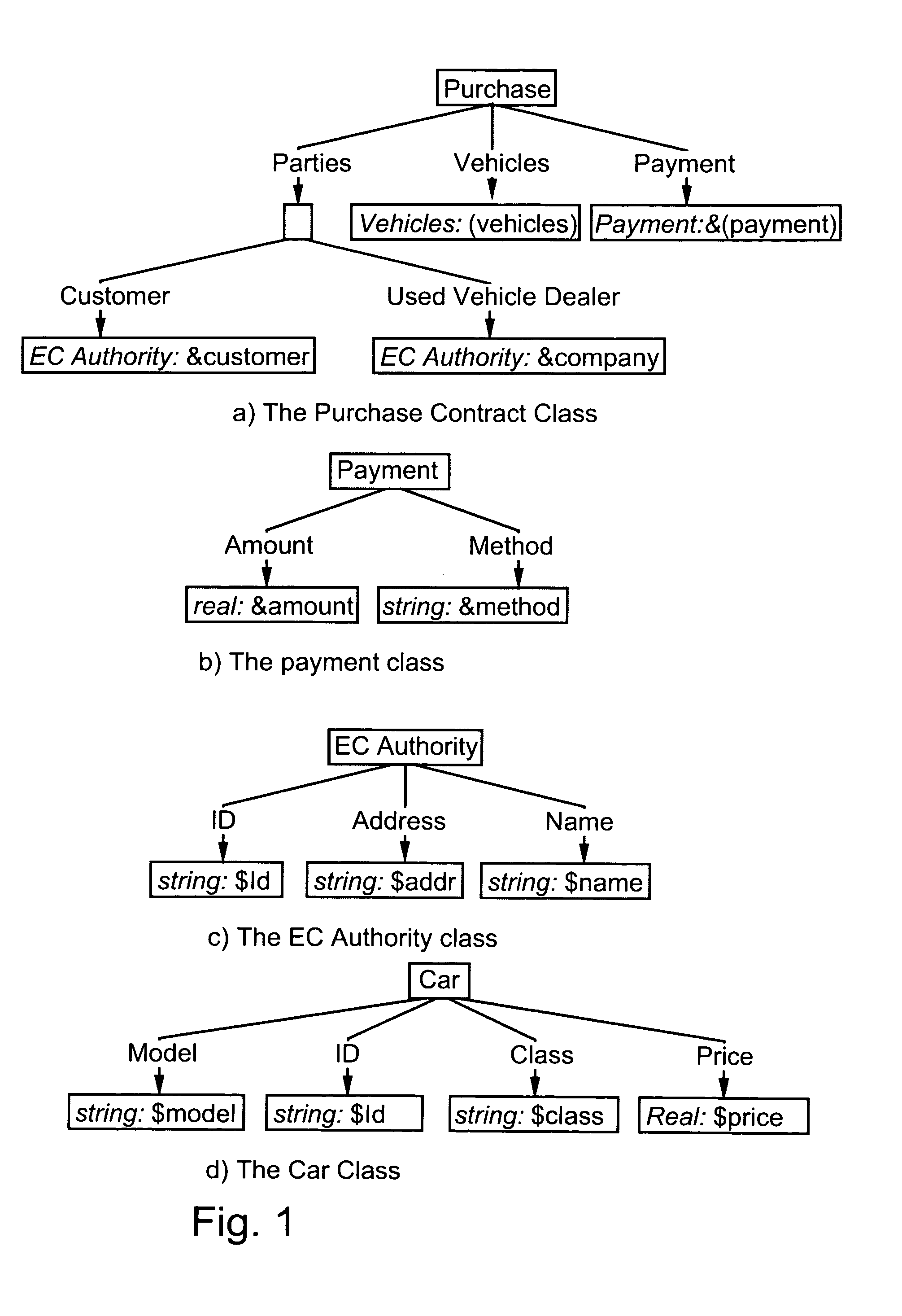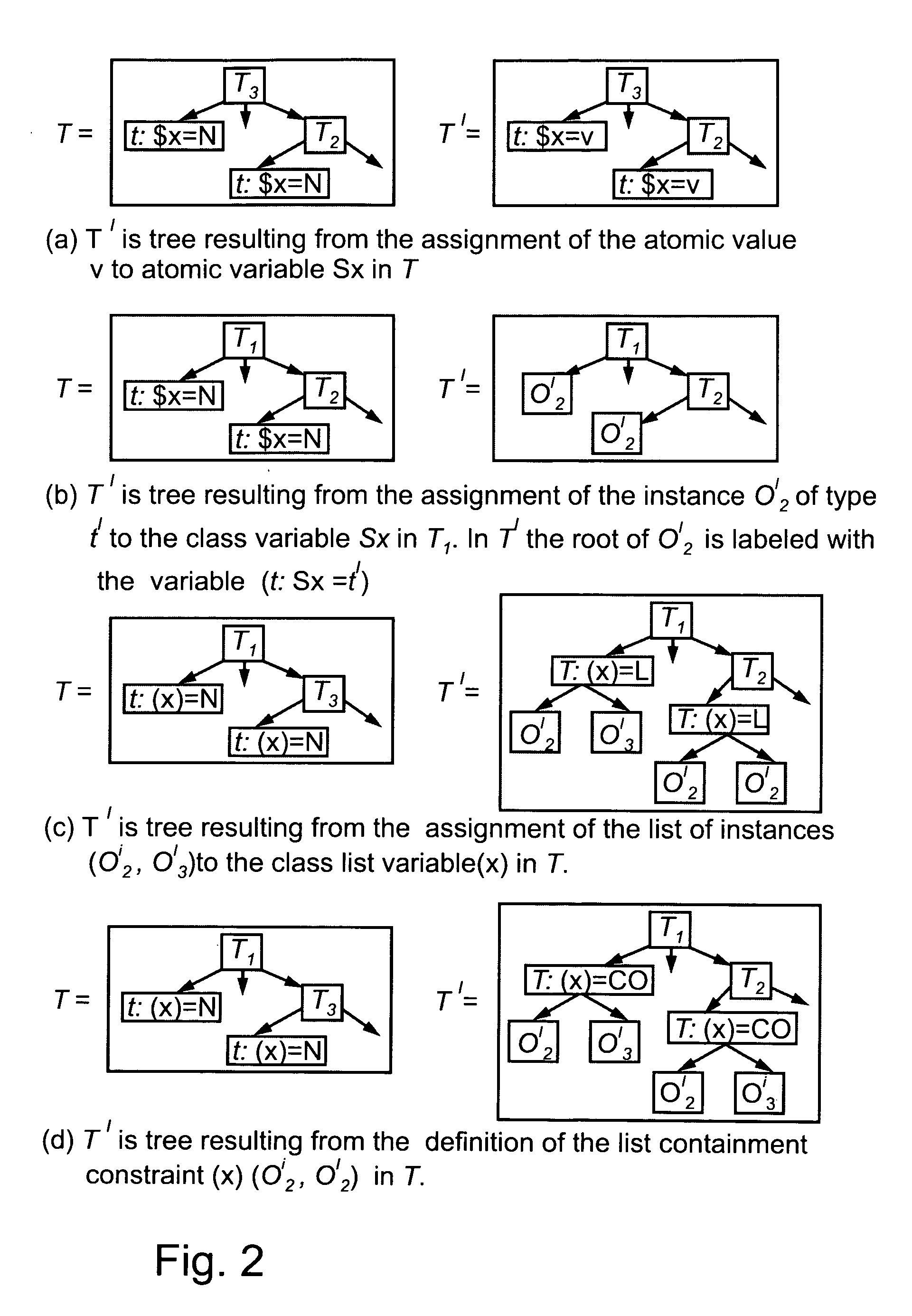System and method for automated contract formation
- Summary
- Abstract
- Description
- Claims
- Application Information
AI Technical Summary
Benefits of technology
Problems solved by technology
Method used
Image
Examples
second embodiment
[0210]The plurality of parts of party machine 10 include a Negotiation Control Program (NCP) 18, which is an overall coordinator of the activities of party machine 10. NCP 18 is preferably operated by the server for FIG. 10, in which the server acts as a trustee. More preferably, the server also operates all of the parts of party machine 10 which are controlled by NCP 18 for this embodiment. Also in this embodiment, NCP 18 is implemented as an instance (i.e., a “copy”) of an NCP for the particular process of negotiations being handled by the server. The NCP also encompasses and controls the negotiation automata (NA's) which are associated with intention trees nodes.
[0211]A Constraints Solver 20 is used by NCP 18, or alternatively may be used by an AEE 22, or even preferably by any automaton. Constraints Solver 20 is used to check sets of constraints which are initially specified and / or generated during the unification process, as described in greater detail in Section 4 above. Brief...
case 1
[0261] The soft constraint is assigned a priority and it is the only one at its priority level. This means we should minimize 4(D1−)+(D1+).
case 2
[0262] Otherwise, we need to normalize this constraint so that we can compare it to other constraints. We use the idea of percentage deviation.[0263]1. Define (Dp1+)=(D1+) / target and (Dp1−)=(D1−) / target.[0264]2. What we minimize is the expression minimize (A*(Dp1−)+(1−A)*(Dp1+), [0≦A≦1] e.g., minimize (0.80*(Dp1−)+0.20*(Dp1−)).[0265]3. If, in addition, the overall weight of this soft constraint is W, then we will minimize the minimization expression minimize (W*2)[0.80*(Dp1−)+0.20*(Dp1+)]. W*2 is an estimate, as only one (Dpi) variable will contribute to the result, evidently the other will be set to zero in solving the goal program.
[0266]Now consider a constraint of the form expression≦ value. It is compiled as above into:
expression+(D−)−(D+)=value.
[0267]Here the goal to minimize is W*(Dp1+), where W and (Dp1+) are as above. The cases of θ=‘≧’, ‘>’, ‘<’ are handled similarly.
[0268]4. Preferences:
[0269]We allow minimization (min) or maximization (max) preferences on functions, e.g.,...
PUM
 Login to View More
Login to View More Abstract
Description
Claims
Application Information
 Login to View More
Login to View More - R&D
- Intellectual Property
- Life Sciences
- Materials
- Tech Scout
- Unparalleled Data Quality
- Higher Quality Content
- 60% Fewer Hallucinations
Browse by: Latest US Patents, China's latest patents, Technical Efficacy Thesaurus, Application Domain, Technology Topic, Popular Technical Reports.
© 2025 PatSnap. All rights reserved.Legal|Privacy policy|Modern Slavery Act Transparency Statement|Sitemap|About US| Contact US: help@patsnap.com



